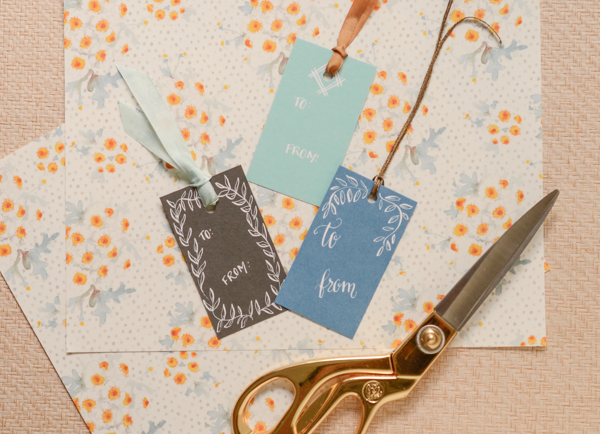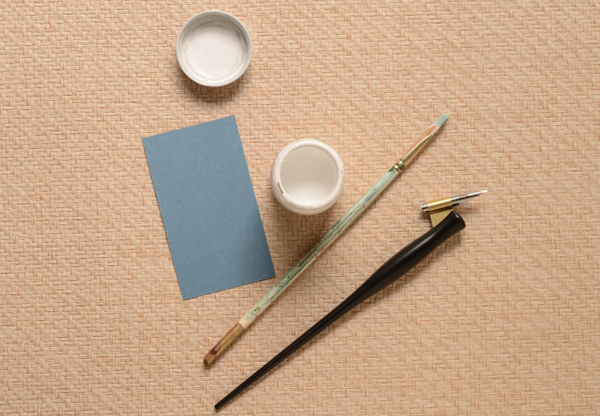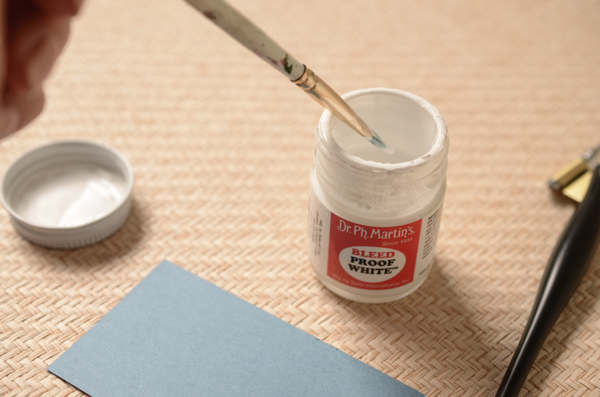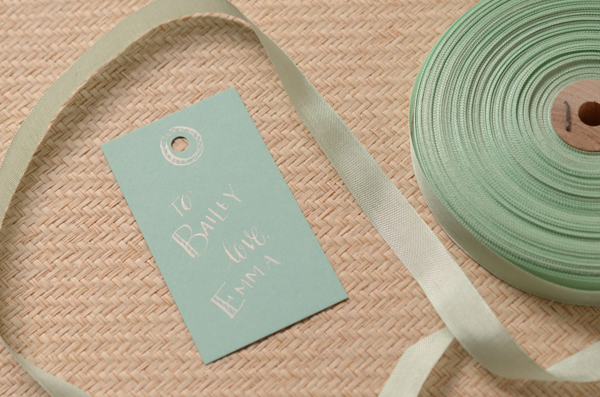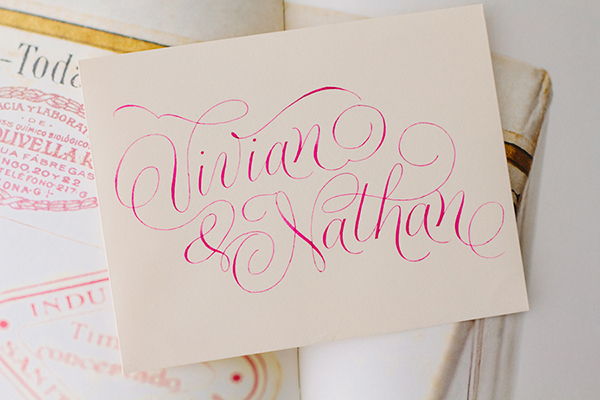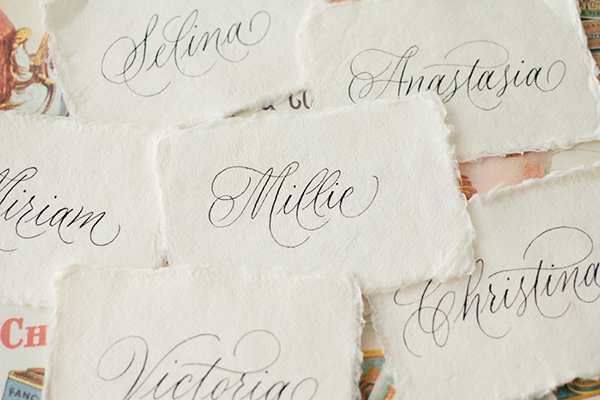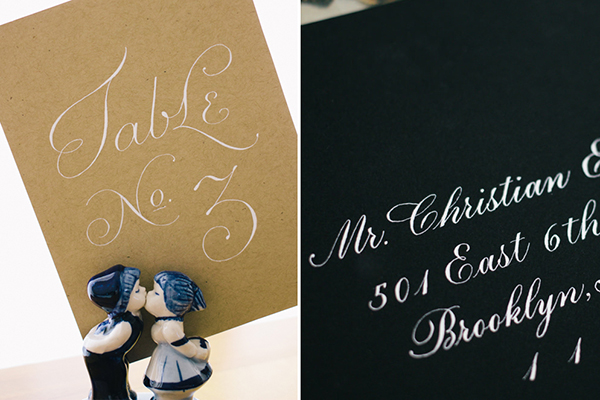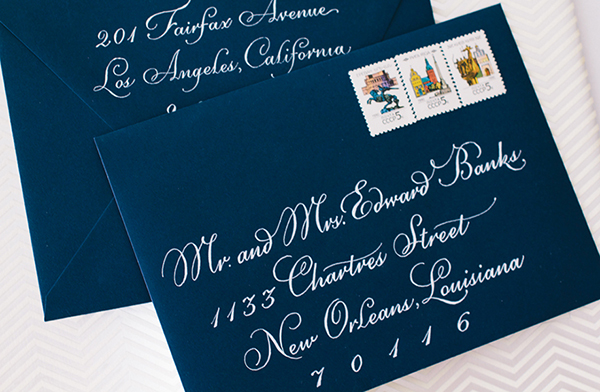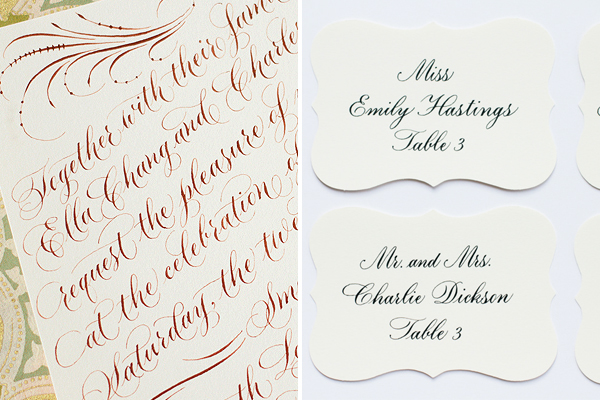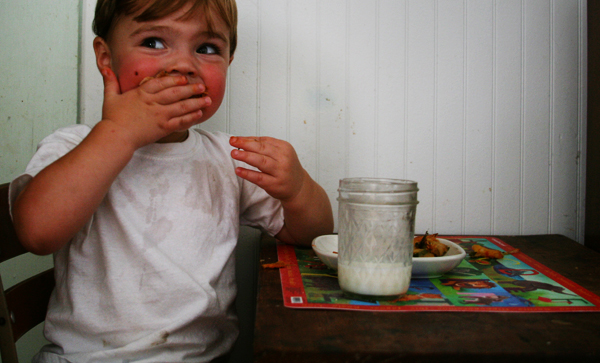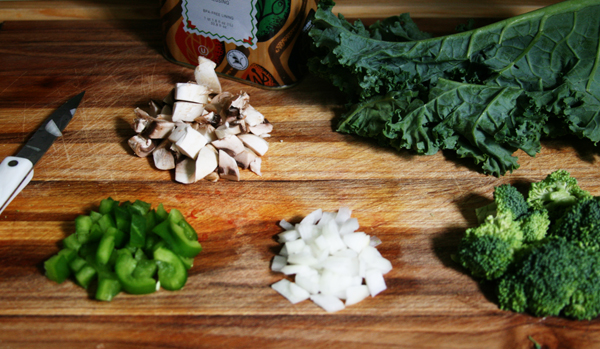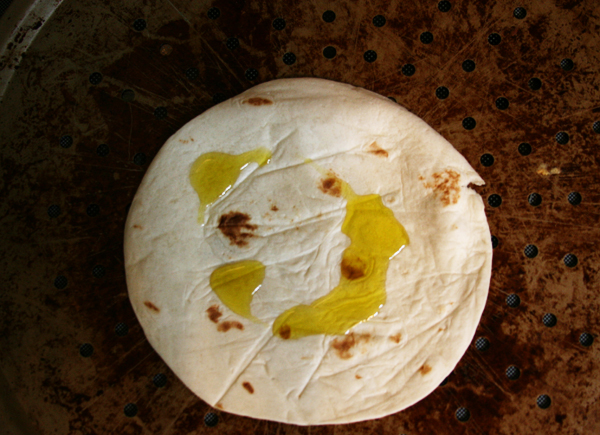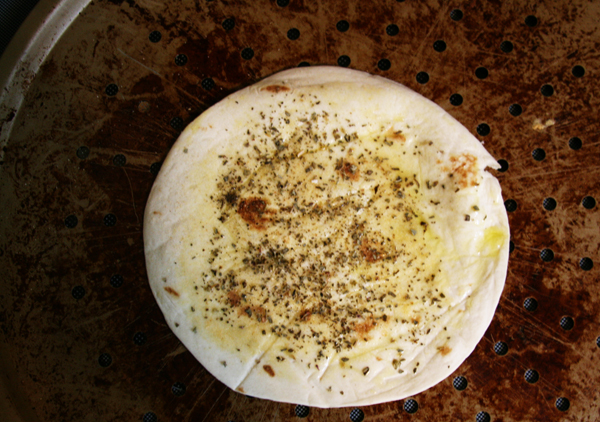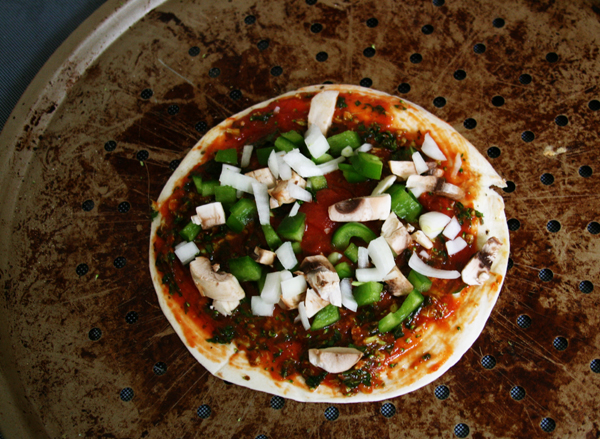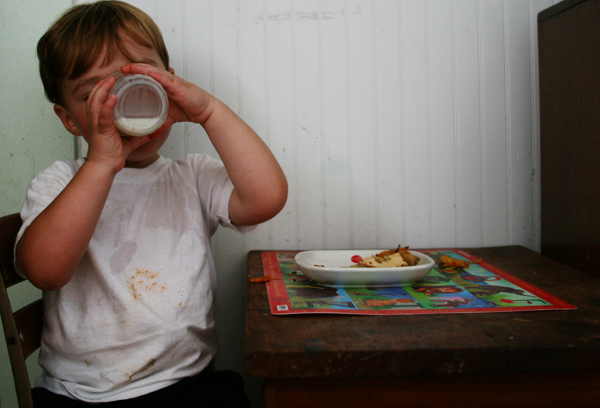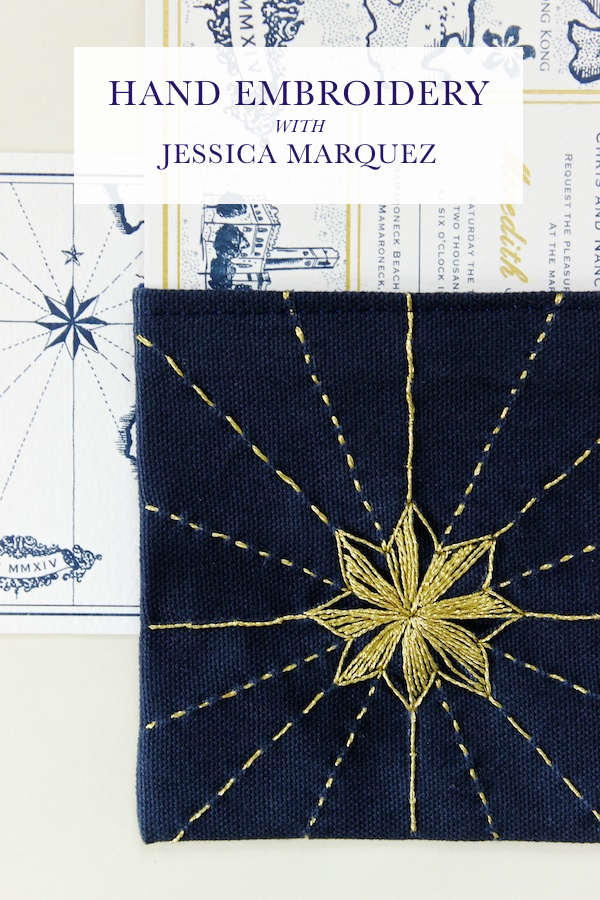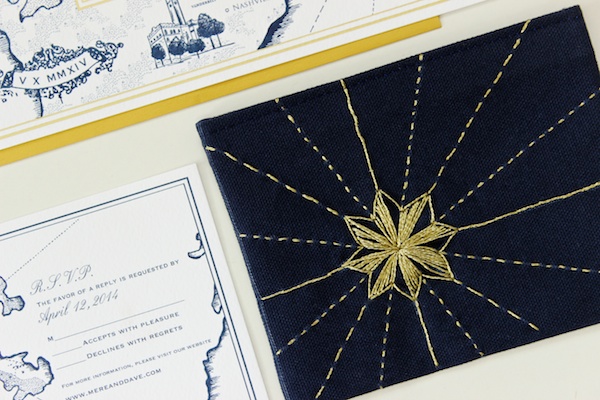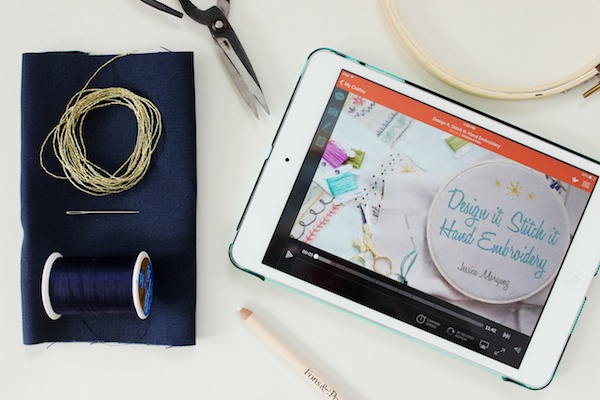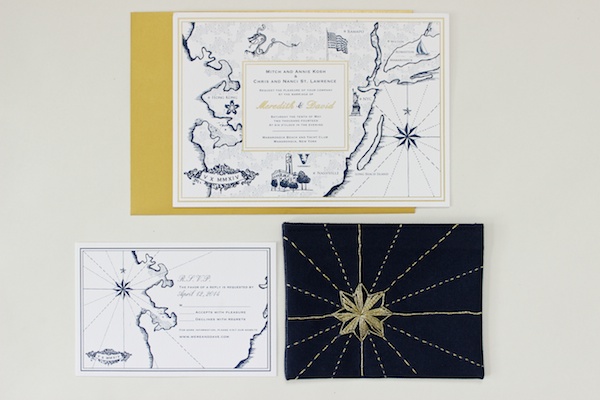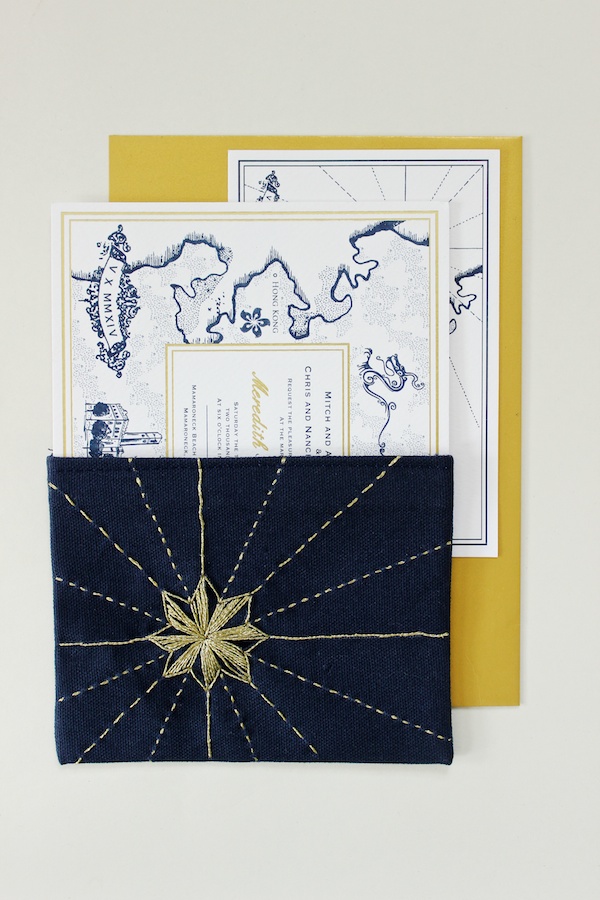I judge books by their covers, wine by its label and brands by their logos. I know the good stuff is on the inside, but I could ogle good packaging all day and have been known to buy things for reasons far divorced from utility. (I’d guess I’m not alone in this crowd.) Packaging may not seem like the sexiest topic, but good packaging is an invitation to purchase, and that’s an invitation we want to extend. –Emily of Clementine
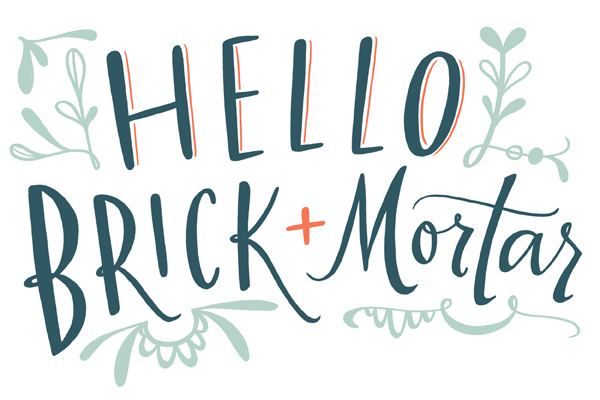
Illustration by Emily McDowell for Oh So Beautiful Paper
First, the golden rule of retail packaging: They’re going to try to open it anyway. I know, you wrote “blank inside.†Customers will still look at me and ask “is it blank inside?†while opening the cellophane. I know, it’s sealed with a sticker. They will carefully peal back the sticker and reach for the card. I know, you labeled what’s inside and drew a little picture on the back showing the 6 different cards in a card set. Maybe they’ll ask me to open it. Why? I think it’s human nature. If you close something, people want to open it. Especially if it’s pretty. But let’s see if we can make your packaging something customers want to open, but instead choose to purchase and wait until they get home to break into. How? 90% of it is simple show & tell.
1. Tell them what’s inside. Pretty basic, but I receive a lot of beautiful, poorly labeled stationery. Is it a flat card? Is it blank inside? Is it a card set? How many card are in the set? Are they all the same or different? How big is that print? Is it a sticker or a mini-note? What’s it for….? I watch customers fumble through unclear packaging every day. Often, I can interrupt a quizzical look to explain what’s inside, but if I don’t, she’s stranded and will put it back down. If you don’t know what to include, try calling a friend and describing what the product looks like. Then find a well designed way to say the same thing. (Where? My vote is usually on the back. Unless you can make it work with the image.)
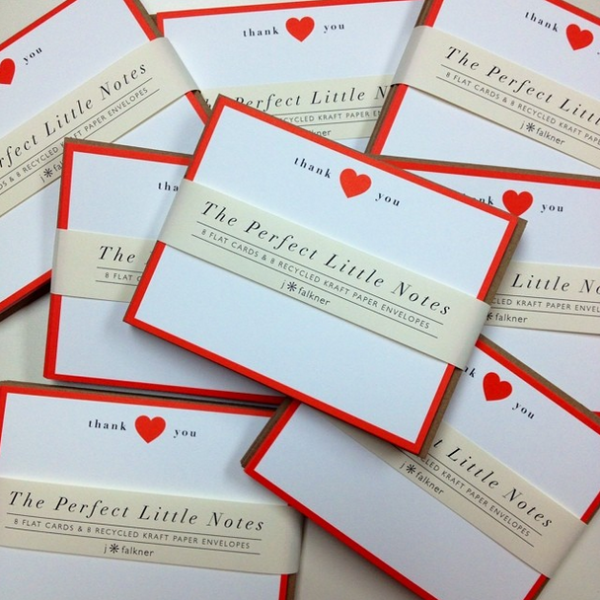
J. Falkner’s Perfect Little Notes use paper bands to tell what’s inside without interfering with the product. The bands are a slight deterrent for customers to open the box and allow retailers to slip the band off for a photo, and put it back on for customers. Win/win!
2. Show them what’s inside. In your online shops, you can clearly photograph and explain. In person, your packaging must speak for the contents. Unless you are packaging a single card or print that is clearly visible, you need to show what’s inside (with a photo, a great good drawing or innovative packaging). Every time customers pick up a box of cards, they’re asking “what’s inside? Answering this clearly increases the likelihood that your product will sell. (Where should you put this information? My vote is for the back if it’s a card/set/calendar or smack in the middle if it’s a tube.)
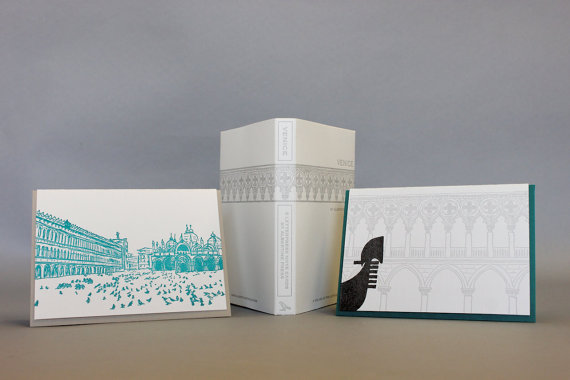
The Albertine Press letterpress library is one of the few products, I (happily) display without cellophane. The spine tells what’s inside and a quick flip open reveals the cards. The packaging itself feels like a gift and looks beautiful displayed in multiples.
3. Extend your branding. The cost of packaging increases the price of your products, but don’t make it a throwaway purchase. Good packaging makes your product feel like a gift, and if done well, can make an indelible mark that the customer returns to.
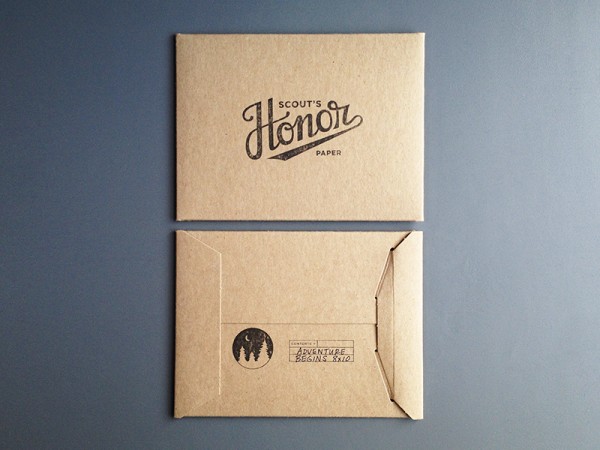
Scout’s Honor Paper packages her prints in stiff craft sleeves with a strong branded stamp on the front and back that tells the print name and size. Though she totally breaks my rule of showing what’s inside, I can easily take one print out to display and house the extras behind.Â
4. Packaging should keep it together and look great. Do you want the parade of horribles? I’ve had cello sleeves crumple or split as customers shove cards back in; stiff cello boxes that pop open; sealed small notes that aren’t affixed within the package so they jumble, but I can’t adjust them without damaging the package; prints with crumpled corners after being dropped; boxes that obscure the card design; gorgeous prints, postcards and tea towels that no one buys because they have no idea what’s inside; closure stickers that pop open more than they stick; belly bands that come unstuck and end up all over the floor; twine that frays and looks frumpy; calendars and prints with no backing that slide to the floor; products that fade in the window; and (through fault of my own) a cello box or two melted each winter due to radiator proximity. Those horribles are not so horrible, but these are costs that retailers absorb, if a product remains poorly packaged we won’t take the risk. You can’t always avoid these pitfalls, but you can mitigate by simply using the packaging yourself: pack your product up, throw the box around, unpack it and leave it on a table for a few weeks. See which of your items still shine, and adjust the rest.
5. There’s no right answer. When in doubt, reach out to a retailer you trust or hop into your favorite store and see what’s working. You should decide on the packaging you want, but here are some considerations:
- Single Cards – Cellophane sleeves are a must. I’m torn on whether a sleeve with the fold over seal is preferable. A little sticker on the back can tell the customer if the card is flat or folded, how big it is and whether the card is blank inside.
- Card Sets – Card sets are the slowest sellers. I think they’re also the most vaguely labeled. You can only show one card on the front, but you can show and tell on the back of the box. How many cards are in there? Are they all the same (if not, please include a label with a photo or drawing), what color is the envelope? Tying it with twine can look pretty or obstruct your image. Stickers can make a pretty seal but the occasional customer that ignores the sticker’s purpose and opens it, leaves me with a damaged product.
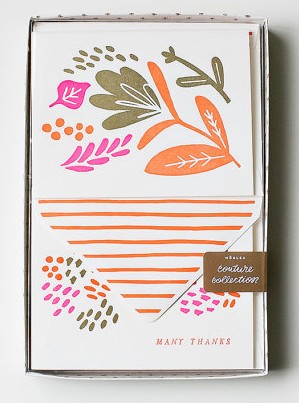
Moglea’s vibrant packaging shows both envelope and note, while the sticker draws your eye from the front to the back of the box where you learn the details of what’s inside!
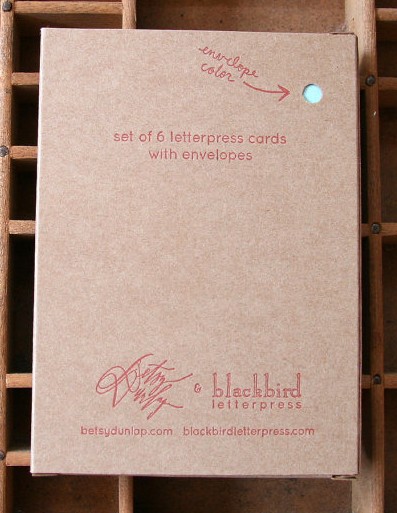
The cute peephole on the back of this card set from Blackbird Letterpress invites the customer to look closer while communicating basic info about this card set.
- Tiny notes, gift tags, book plates, recipe cards – These things don’t often get much respect in a retail setting because they’re little and often confuse the customer. They benefit from super clear packaging, and a bit of personality to invite the customer to pick them up.
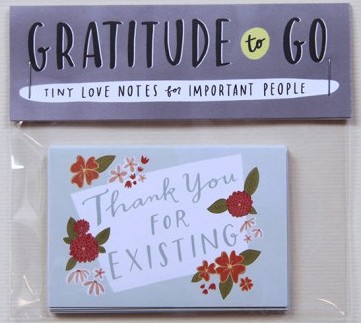
Emily McDowell draws people in with words alone. By the time customers read what her notes say, they’re already sold on the sentiment, with little need to even know the function.
- Pads of paper, journals & notebooks – You guys, wars could be started over whether a notebook should have lined or unlined pages. Let the customer know upfront. Also, let them know how many pages are in there. Cello sleeves help keep the corners neat and the pages clean.
- Prints – Customers often buy prints for gifts or quick decor, so including the dimensions is crucial. A sturdy piece of cardboard lets retailers display the print safely. Prints packaged in tubes are the most difficult to sell. I often have large prints professionally framed, but if the framed print sells, we’re back to the tube. A large color sticker is the best way to show what’s inside.
- Calendars – Customers who are on a calendar hunt want the days to be in boxes, customers who fall in love with your designs don’t care! Either way, it’s nice to show the customer whether or not there are boxes and display each month on the back (customers want to see their birth month, it’s often what sells them.) Like prints, a sturdy piece of cardboard is helpful for display and protection. I see a lot of dual purpose calendars these days (eg, once used, each month can be a print!) I love this idea, but make sure it’s clear so the customer knows they’re getting two uses for the price.
- Coasters – Coasters are one item where the packaging might be saved for storage, so this can be a great chance to extend your brand into a customer’s home.
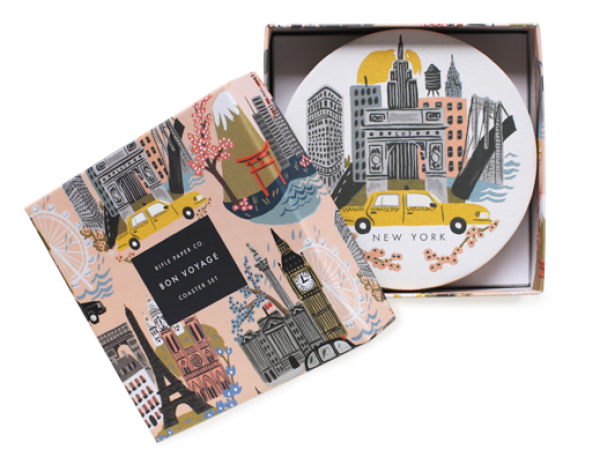 Rifle Paper Co’s coasters are packaged in boxes that make adorable storage for any other little thing. It’s a perfect extension of branding and makes the packing bridge into extended use.
Rifle Paper Co’s coasters are packaged in boxes that make adorable storage for any other little thing. It’s a perfect extension of branding and makes the packing bridge into extended use.
- Tea Towels – Tea towels are almost always displayed folded. To prevent constant unfolding, a nice wide belly band with an image of the opened towel can help. (Bonus: offer to send a sample to display if your retailer buys a certain quantity.)
- Temporary tattoos – Temporary tattoos are often shared, or used as party favors, so people want to know how many they’re getting. I also think they look better on the body, so a photo of them in action is a super plus.
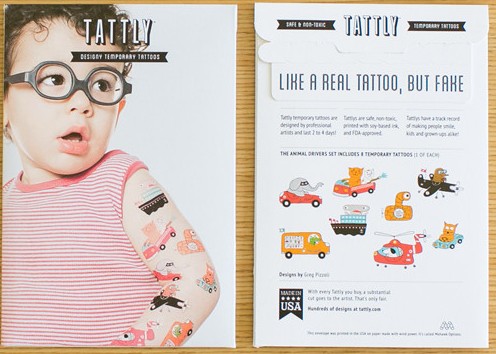
Tattly’s packing shows the products on (uh, adorable) models, then the back manages to be fun while describing exactly what’s inside.
- All other beauties – You makers are so darn prolific, I can’t even keep up with all of the areas that you’re branching into, so I’ll leave you with something simple: let the product speak for itself. Let it guide the packaging and be ok with being simple. Sometimes, that’s the best approach.
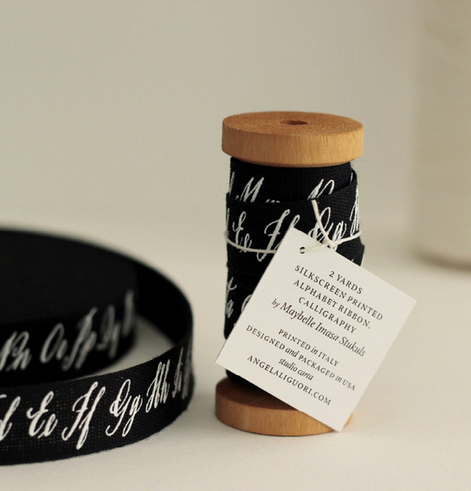
I’m utterly blown away by the beauty created by mixing the talents of Angela Liguori and Maybelle Imasa Stukuls. All I want to know is more about this ribbon, and Angela’s simple spool and clear font on a card give me just that.Â
The final golden rule of packaging is this: if you have an innovative idea, go for it. All of this is open to your interpretation. I don’t like cello sleeves, but I’m pimping them out here because it’s the current best solution to selling cards. If you have a better idea, please, go on. As long as your packaging shows and tells what’s inside, you’re meeting your retailers’ needs. If you can make it inventive and even more fun, you’re taking a step further to extend your brand and build a relationship with your retailers and customers.
Search outside of the stationery world for ideas. When I need a bit of inspiration (like how to finish up this post)Â I pull a collection of items from Clementine to see where themes emerge. I love the packaging below for all kinds of reasons: font, color, utility. Mostly, because it draws you a step closer to the product, making the customer one step closer to falling in love and taking it home.
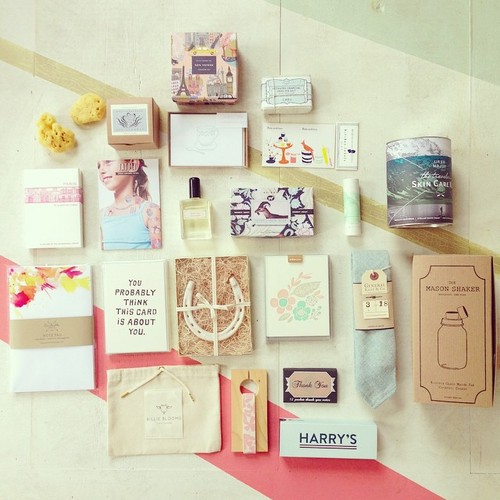
Just another day in the shop, lost down a rabbit-hole of the beauty you all make via my Instagram.
I can’t wait to see what you pack up next! xoxoxo – Emily
